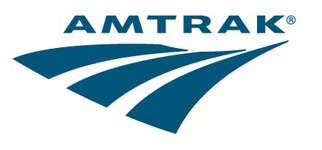Riding the Rails

With the rapid expansion of federal spending responding to the perceived national security requirements after 9/11, passenger railroad supporters looked forward to a tripleheader.
First passenger railroad service would have to be upgraded and expanded to facilitate mass population evacuations from cities during attack emergencies.
Second, by embarking on a “national defense” passenger rail program, there would be less consumption of gasoline and less gridlock on congested highways.
Third, the energy efficiency of transporting people by intercity rail and commuter rail would diminish some of the buildup of greenhouse gases.
Right after 9/11, the airlines descended on Washington, D.C. and got a package of loans, guarantees and other federal assistance amounting to $15 billion.
AMTRAK got just about nothing. But then for this vast nation with large pockets of consistently clogged highways, AMTRAK has been getting very little federal aid since its creation in 1971 as a public service corporation. President Bush wants to cut what little (just over $1 billion a year) AMTRAK receives.
Consider this: according to the Government Accountability Office, AMTRAK has received a total of $30 billion during the last thirty six years in federal aid for its intercity train service over the entire country. A few weeks ago, the Federal Reserve bailed out Bear Stearns, a large, reckless investment banking firm on Wall Street for just under $30 billion.
Japan and Western European countries have modern, fast rail services, with modern equipment and solid rail beds coursing throughout their territories with governmental assistance. They are a public service, not meant to make a profit, anymore than public libraries or public schools, although the rail passengers do pay for their tickets.
In our country, AMTRAK has been starved by the federal government which lavishes taxpayer money on the airlines in a variety of ways.
As a result, AMTRAK has aging equipment, has to use the freight railroad beds and has very little money for rolling stock and track capacity, especially at critical “chokepoints” where delays occur with freight trains.
With soaring gasoline and airfare prices, more Americans are taking mass transit and AMTRAK to get to their destinations. AMTRAK is on the way to a record year, transporting over 27 million passengers in 2008, with ridership up over 12 percent from last year.
AMTRAK and its equipment suppliers, constrained by money, have been shrinking. Routes have been abandoned. Manufacturers of rail cars and locomotives have also diminished. So, expansion to meet the growing demand will be difficult and take some time. This passenger railroad carries less than 5 percent of the domestic passengers carried by the airlines.
Losing about $1 billion a year, AMTRAK’s financial needs are trivial compared to large for-profit corporations who feed from the public trough in Washington, D.C. Some Congressional help is finally on the way.
The House and the Senate have passed the Passenger Rail Investment and Improvement Act with veto-proof margins to over-ride a threatened veto by George W. Bush.
Assuming no major changes in the House-Senate conference on the bill, AMTRAK will receive annual appropriations closer to $2 billion a year, compared to the current level of $1.2 billion. This includes money for capital investment, for reducing debt and expanding operating budgets for more passengers. There is also a matching-grant program for the states to expand service, similar to the program long in place for highway construction.
The large freight railroads are pressing Congress for public money and tax credits to upgrade railroad beds and pay for track expansion, which could redound to the benefit of passenger rail service as well.
The American people have to ask themselves how robust and convenient a modern passenger rail system they want. As good as the one in Canada? As good as the systems in France and Germany?
Given the way the federal government wastes money, there are many ways to justify a first-class, high-speed passenger rail system that will save more than it costs—especially in a security emergency, a national disaster like Katrina and the delays, fuel and pollution avoided.
All in all, a worthy topic for public debate during this political year.
END
Note: By submitting your comments you acknowledge that Nader for President 2008 has the right to reproduce, broadcast and publicize those comments or any part thereof in any manner whatsoever. Please note that due to the volume of comments we receive, not all comments will be published and it may take several hours for your comments to be reviewed, and those that are published will not be edited. But all will be carefully read, considered and appreciated.
Your comment will be visible to you (and only you) after you post it, at which point it is queued for consideration and no longer visible. Please refrain from submitting your comments multiple times.
Note: By submitting your comments you acknowledge that Nader for President 2008 has the right to reproduce, broadcast and publicize those comments or any part thereof in any manner whatsoever. Please note that due to the volume of comments we receive, not all comments will be published and it may take several hours for your comments to be reviewed, and those that are published will not be edited. But all will be carefully read, considered and appreciated.
Your comment will be visible to you (and only you) after you post it, at which point it is queued for consideration and no longer visible. Please refrain from submitting your comments multiple times.



